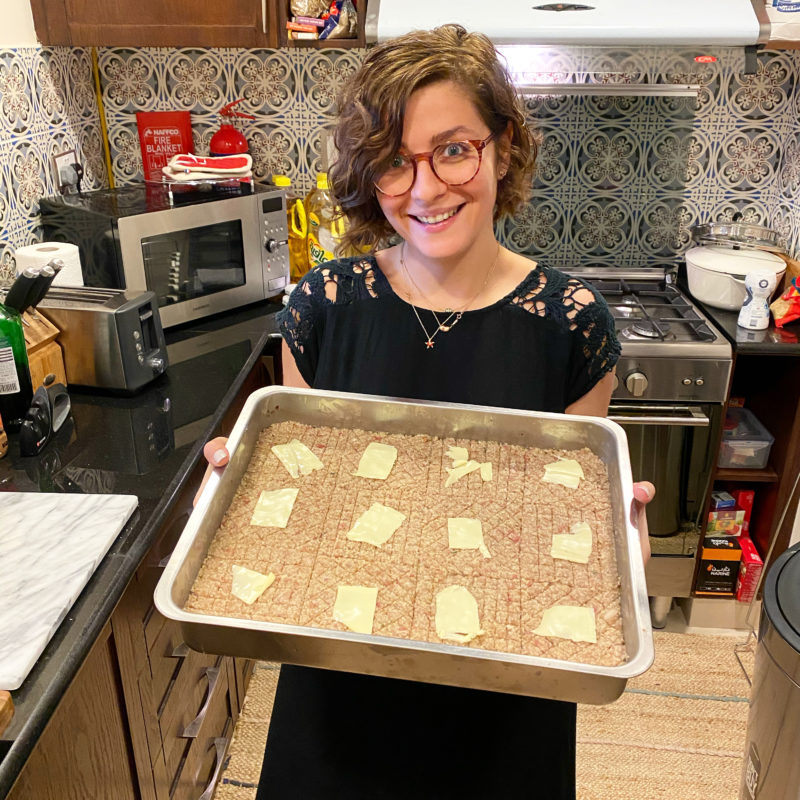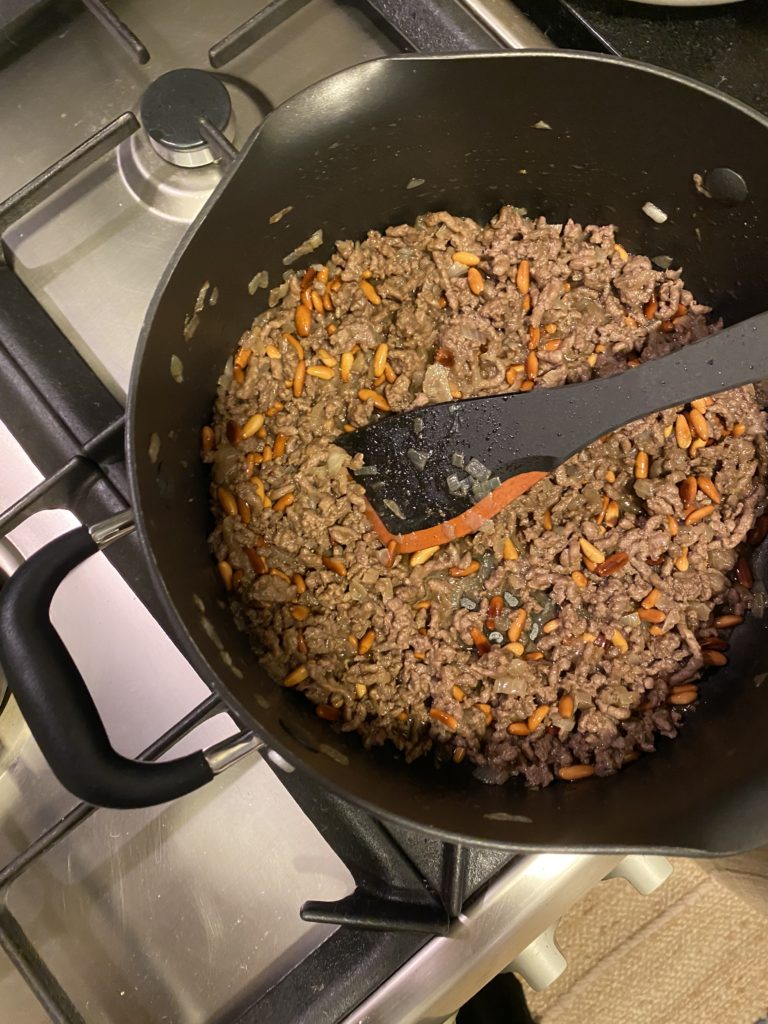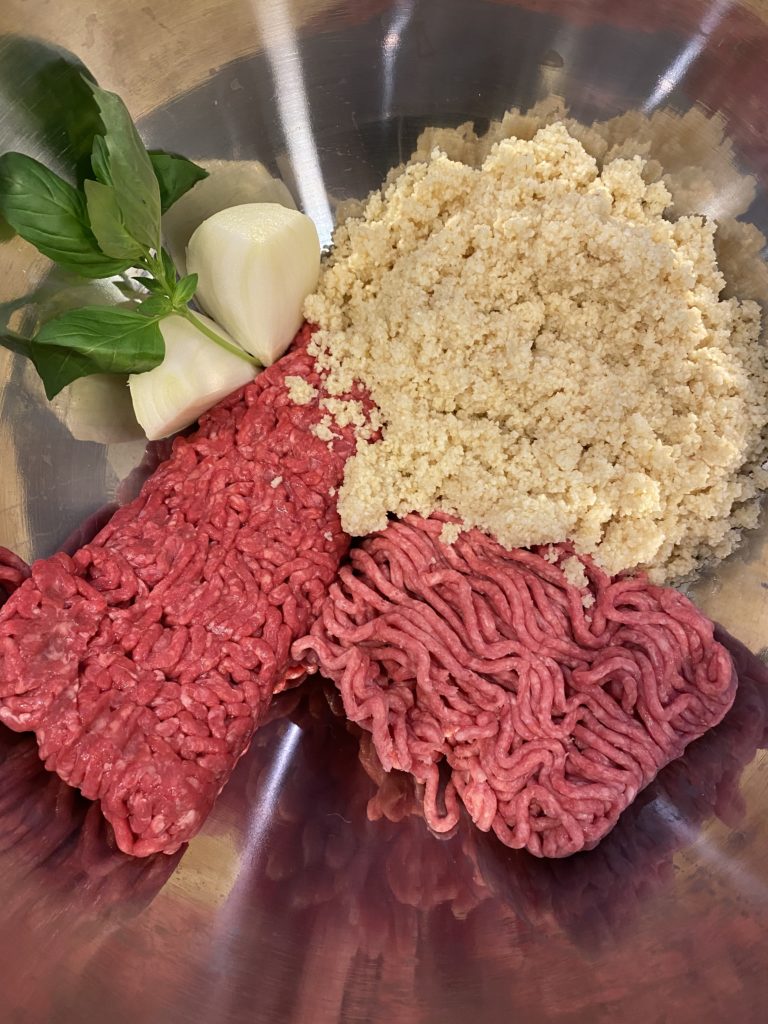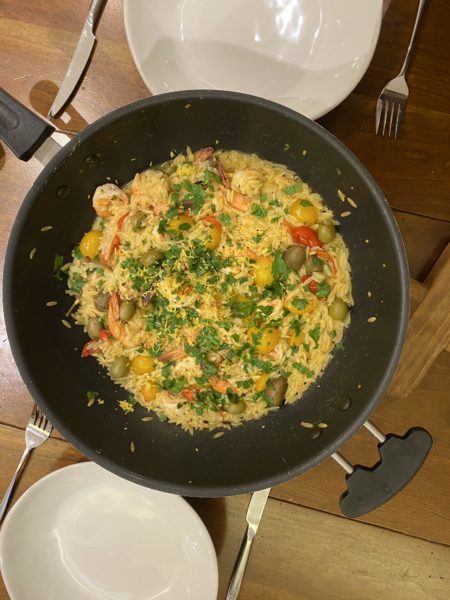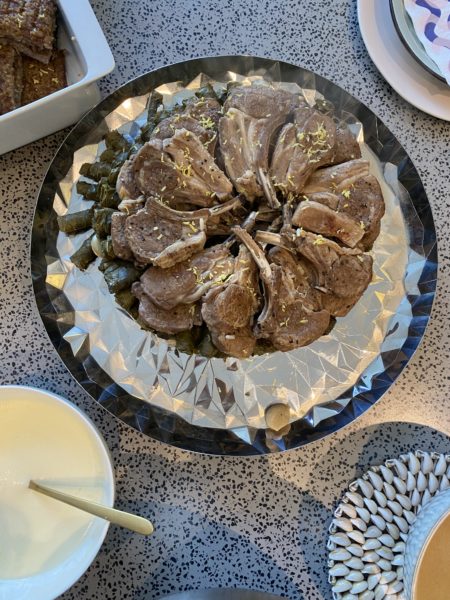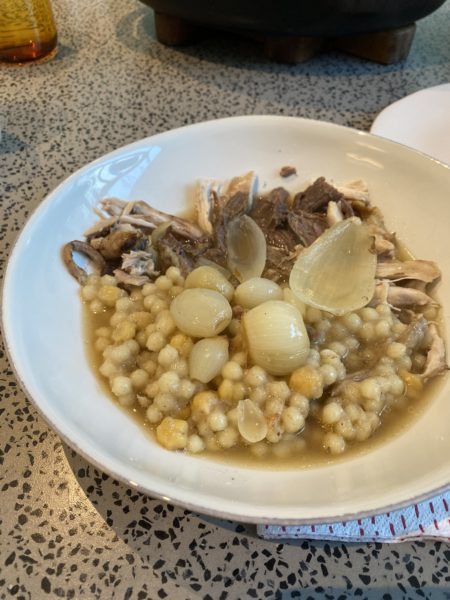Kebbe is one of those dishes that I always believed required some kind of magical skills that only my mother had. In the last couple of weeks she has has been patiently guiding me through this and some of her other amazing recipes, on zoom or whatsapp (thank you coronavirus!).
It feels like she is here in Dubai with us, making us comfort food and telling us everything will be ok. I still miss her though and can’t wait for planes to carry passengers again so I can make my way home to Beirut, and to her.
“Friends say that my mom’s Kebbeh is better than their own mothers’. If you understand Lebanese people at all, you know that’s probably the biggest compliment anyone could ever make about someone’s food.”
When I moved out of Lebanon, every time I visited, my mother would make sure to bake 2 trays of Kebbeh. One for me to have on my first night back, and another for me to take back with me in my luggage. Kebbeh is best had with a yogurt, garlic, cucumber and dried mint mix.
Kebbeh Bil Sayniye
Ingredients
These quantities are for a tray sized 40 x 32 cm.
For the Kebbeh
- 400 grams of Minced Beef
- 400 grams of Minced Lamb
- 2 cups of Fine Burghul (cracked wheat)
- One medium sized Brown Onion
- 8-10 large basil leaves
- Salt & Black Pepper
- Butter
- Olive Oil
For the Minced Meat
- 300 grams of Minced Beef
- One medium sized Brown Onion finely chopped
- Pine nuts
- Ghee
- Pomegranate Molasses
- Salt, Black Pepper, Nutmeg, Cinnamon, Cardamom Powder (or alternatively you can use 7 spices)
Directions
For the Kebbeh
- Soak the 2 cups of burghul for an hour.
- Blend the Basil (8-10 leaves) and Medium Onion in a food processor.
- Press the water out of the burghul. Mix the minced beef and lamb, burghul, onion and basil mix, salt, and black pepper all together until you have a uniform dough.
- Grab an aluminum tray and brush the bottom with olive oil.
- Divide the Kebbeh mix in two. Take handfuls of the dough, flatten them in your hands then lay them at the bottom of the tray until you have a uniform layer. Dip your hand in salted water to flatten and merge the Kebbeh.
- Layer the minced meat mix (see below) on top. It should cover about 90% of the base.
- Use the remaining Kebbeh dough to create the top layer. I like my Kebbeh really thin, so I try and make these layers as thin as possible.
- Wet the tip of your knife in the water and salt bowl, and start by drawing a deep line into the top layer, dividing it into portion sized squares (or if you’re using a round tray, divide it like a pizza) . Then using the same knife, draw checkered patterns onto each portion (see picture & video below).
- Add slices of butter on the top and bake for about an hour at 200 degrees.
For the Minced Meat mix
- Heat some Ghee (or a mix of butter and olive oil) in a pot and fry the chopped onion.
- Wait for the onion to begin browning, then add the minced meat. Flavor with salt and spices.
- In the meantime cook the pine nuts in butter. Don’t let them cook for too long. They should still have a light colour when you remove them.
- When the meat has cooked, add a tablespoon of pomegranate molasses, mix a little. Turn the heat off, and add the pine nuts.
Tips: If you’re using a different size tray, recalculate the proportions that are needed. If you have extra Kebbeh dough left, just shape them into patties and fry them in vegetable oil with a side salad. Also it’s normal for the Kebbeh to shrink after you’ve cooked it. That’s because the way we cook it doesn’t have too much Burghul in it.
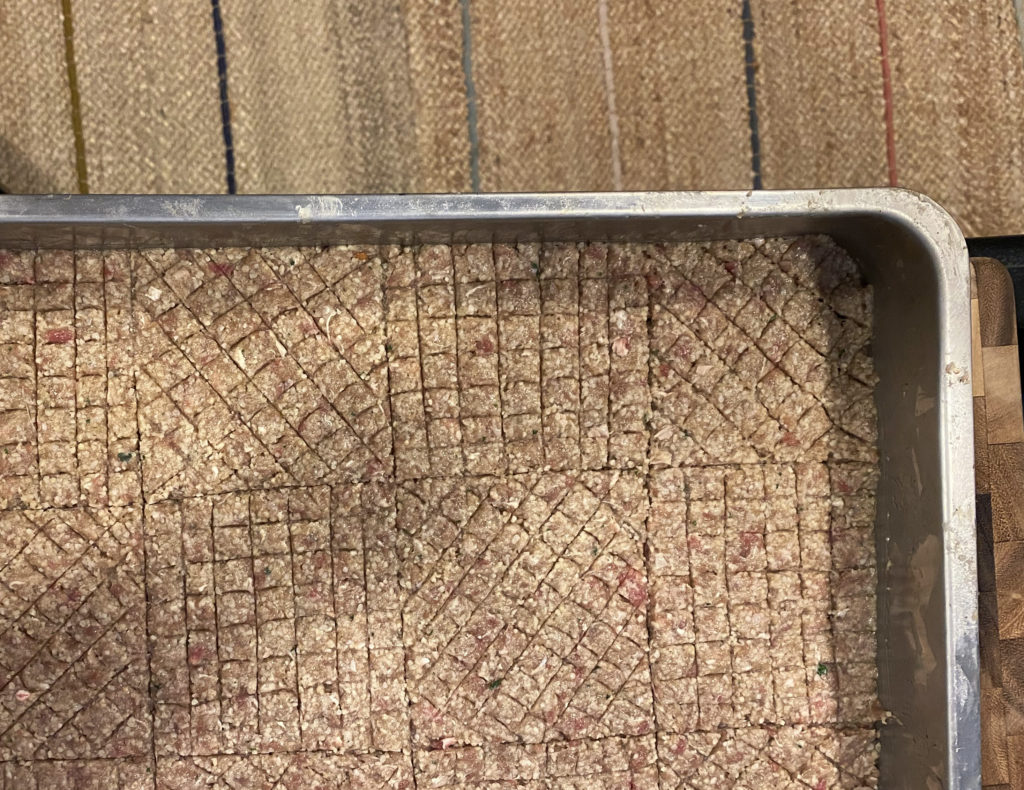
Listen to me explain the process, debate whether Kebbeh is better hot or cold, and discuss how strongly I feel about this dish.
